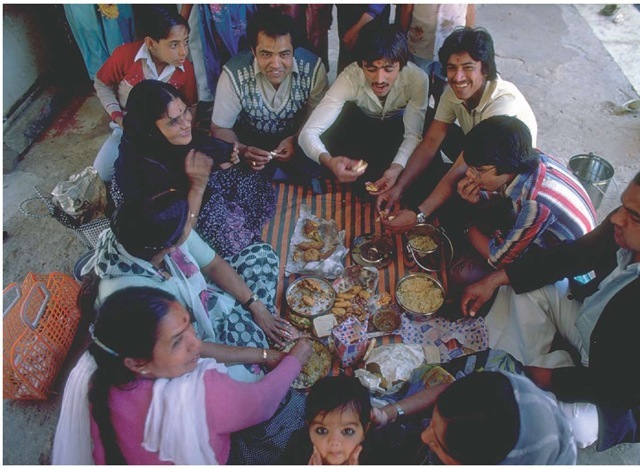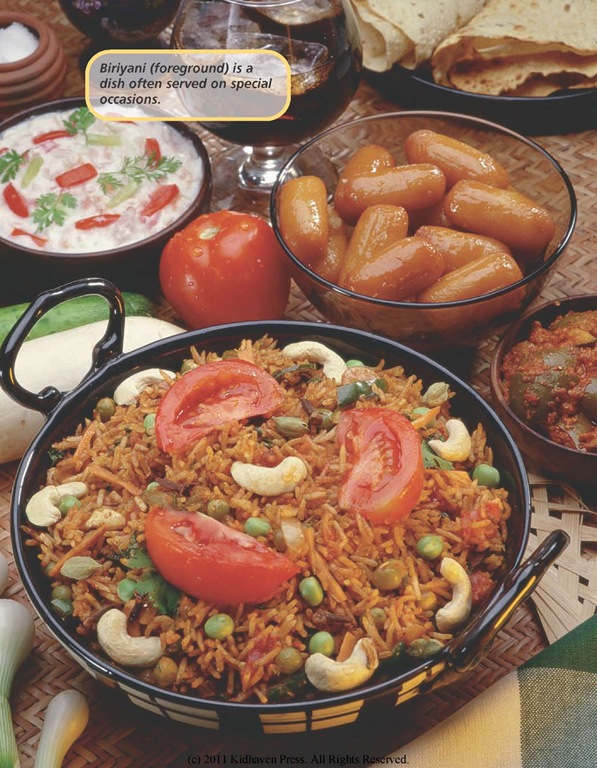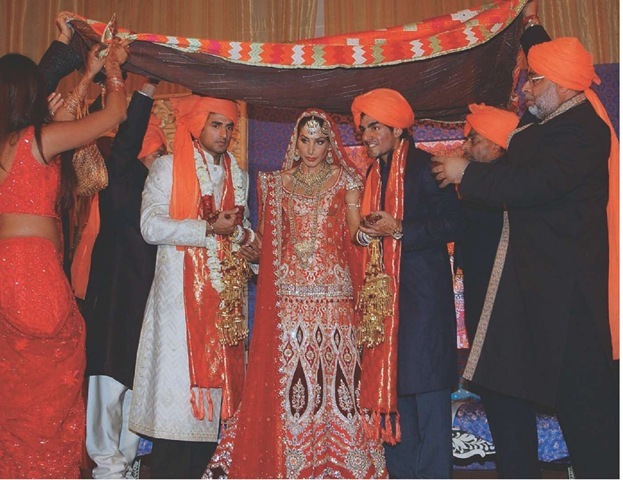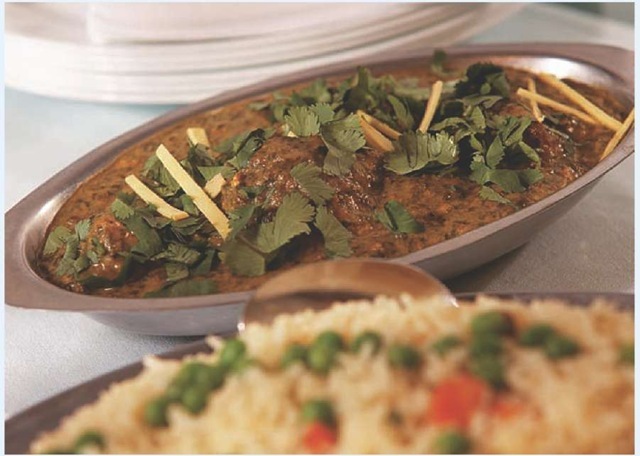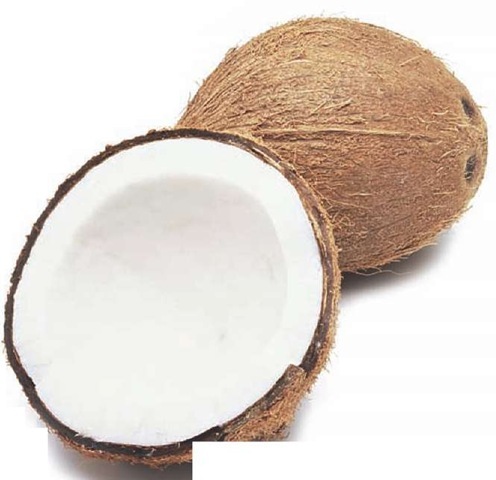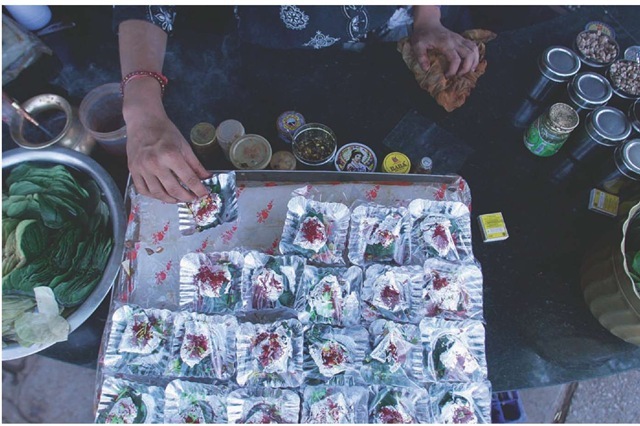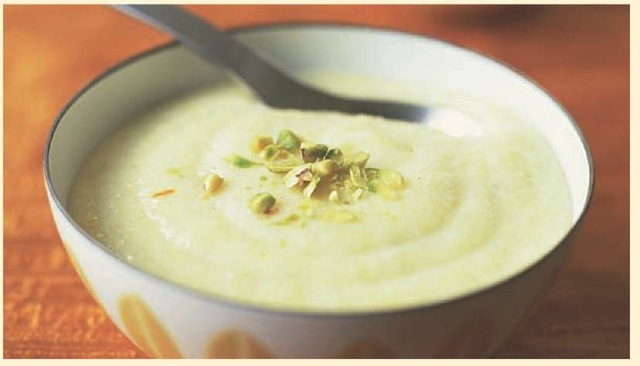Hospitality is very important in India. "When a guest walks into your house," an Indian saying goes, "God comes with him."14 That is why the finest food is reserved for guests.
A Unique Beverage
As soon as visitors enter an Indian home, they are offered a welcoming beverage. In southern India, rasam (rah-sahm) is specially prepared for this purpose. Rasam is similar to consomme. But instead of being made from beef or chicken broth, it is made from water flavored with sour fruits and savory spices. Indian cooks usually prepare a variety of rasams. This way guests can select their favorite.
Rasam is easy to make. Cooks combine the nutrient-rich water used to prepare legumes with lemon or tamarind juice. The latter is a tart tropical fruit. Hot black pepper and chili powder are added to the liquid, which is boiled and served in a glass. To sweeten the drink, pineapple juice, ginger, mint, or crushed tomatoes may be added.
Indians honor visiting friends and relatives by serving their favorite foods.
Jaggery
Most Indian sweets are made with unrefined sugar known as jaggery. It is a dark, coarse sugar that contains no chemicals or preservatives. Jaggery is made from sugar cane sap. The sap is boiled until it becomes syrup.
The syrup hardens into coarse blocks.
Jaggery tastes like a blend of molasses and brown sugar. It contains vitamins, minerals, and protein and is said to have health benefits. In fact, it is used in Indian medicines to improve liver function and purify the blood.
Women gather to cook special dishes with jaggery during a religious festival.
Rasam is quite nutritious and is supposed to aid in digestion. It has a delicate flavor and a wonderful aroma. Ruth, who grew up in India, explains that rasam is "pleasantly light and spicy, delicately textured, but with sass."15
Layers of Rice
After a welcoming beverage, guests are always offered a wide array of foods. On special occasions, a rice and lamb casserole called biriyani (bi-ri-yaah-nee) is sure to be on the menu. It is also a popular dish among Indian Muslims during Ramadan. During that month-long holiday, many Indians fast during the day but feast in the evening with festive foods that almost always include biriyani.
Indians have been celebrating with biriyani for centuries. Historians think the dish was brought to India by the Moghuls (Mo-ghuls). These central Asians were descended from Genghis Khan. They ruled India from the 16th century until 1858.
A Muslim vendor sells biriyani, a layered lamb and rice casserole, during Ramadan.
To prepare biriyani, cooks make a spiced lamb stew like roghan josh or lamb korma. At the same time, they partially cook rice. The stew and rice are alternately layered one on top of the other. The dish is then covered and baked. As it bakes, the juice from the stew moistens, cooks, and flavors the rice. The end result is an edible work of art composed of brightly colored, contrasting layers, tantalizing fragrances, and a delicious blend of flavors. To add to the dish’s appeal, Indian cooks often add fried onions, dried fruits, and nuts, and serve it with cucumber raita.
Because making biriyani is time-consuming, there are special biriyani makers who prepare made-to-order biriyani for busy Indians. Whether it is homemade or store bought, whenever biriyani is served, Indians know it is a special occasion.
It has been this way for centuries. According to chefs Smita and Sanjeev Chandra, in the 17th century, when the English ambassador was invited to dinner by the Moghul emperor, "[The] banquet centered on elaborate rice biriyanis, as was the custom in Moghul times." Modern banquets, they explain, "also give pride of place to biriyani."16
Fabulous Weddings
Biriyani is almost always served at Indian weddings. Among well-to-do families, weddings can be quite lavish. Some weddings involve hundreds of guests and many multiple-course banquets.
This Indian wedding ceremony will be followed by a lavish feast sure to include a large assortment of sweets.
Depending on the couple’s religion, the menu may be vegetarian, or it may include lamb, meat, fish, and chicken dishes. Dozens of different spicy-sauced stews; a wide range of dals, chutneys, and raitas; tandoor-cooked specialties; rotis; and an array of rice and vegetables dishes may be served. But no matter what else is offered, there is always a large assortment of sweet desserts.
Mishani
When meat is served at Indian weddings, a two-day feast that consists of multiple lamb dishes known as a mishani (mi-shah-nee) is usually part of the menu. On the day of the wedding, the bride’s family serves seven lamb dishes to welcome the guests. The next day the groom’s family does the same, which means that fourteen different lamb dishes are served.
Lamb has always been popular in India, since it can be eaten by people of various religions. The tradition of serving multiple lamb courses at weddings began in ancient Persia and was brought to India by Persian traders. Popular mishani dishes include roghan josh, spiced lamb liver, lamb meatballs, shredded lamb cooked with yogurt and spices, lamb kebabs, roasted leg of lamb, and lamb kidneys.
A dish made with lamb will be served at an Indian wedding.
Lighting candles and sharing sweets are traditions of Diwali, the Hindu festival of lights.
Sweets have special meaning for most Indians. Hindus believe that honey, milk, sugar, and nuts are all gifts of the gods. Muslims say that nut- and fruit-filled sweets are symbols of wealth and bring good luck to all who eat them. For both groups, offering sweets to wedding guests is a way to show love and friendship. And laapsi (lahp-see), a hot, porridge-like dish, is one of the most popular, especially among Hindus.
Laapsi is made of cracked wheat, sugar, and water. The wheat is slowly fried in ghee until it turns a deep, dark red. Then water is spilled over the grain, and the mixture is cooked until it is dry and soft. Before it is served, syrup made from sugar and water is poured over the top. It is then decorated with slivered almonds.
Laapsi has a sweet nutty taste and a soft, comforting texture. Unlike the rest of the desserts, which are usually served by waiters or buffet-style, the bride and groom themselves almost always serve laapsi to their guests. This is a way for the wedding couple to show respect to their guests and thank them for joining in the celebration.
Sharing Sweets
Sweets are also shared during festivals and holidays. For example, giving sweets to visitors is an important part of Di-wali (Dee-wah-lee), the five-day Hindu festival of lights. Diwali is a happy occasion marked by fireworks, brightly lit lanterns, and sweet treats.
Many of these treats feature coconut, which Hindu myths say is a favorite food of the gods. Sharing coconut treats with guests lets them know that they are held
Coconut
in the highest esteem. Baljekar notes: "The very sight of coconut conjures up images of religious occasions in India. . . . For every religious event coconut is placed in a prominent place on a full pot of rice." Its presence, she explains, symbolizes "a life full of rich experiences."17
Coconut Barfi
Barfi is made like fudge and hardens to a similar texture. It is not difficult to make. You can decorate each piece with a sliver of almond or a cashew nut.
Ingredients
1 cup milk
J2 cup butter
2 cups grated coconut
2 cups sugar
Instructions
1. Combine milk and butter in a saucepan and bring to a boil.
2. Lower the heat. Stir in the coconut and sugar. Cook until the mixture thickens enough to roll it into a ball in your hand, about five to ten minutes.
3. Grease a shallow pan with butter or nonstick spray. Remove the coconut mix from the heat and pour it into the pan, spreading it thinly. Allow it to cool.
4. Cut into twelve squares. Store the barfi in an airtight container.
On special occasions, Indians serve sweet treats wrapped in silver foil.
For this reason, and because it is delicious, coconut barfi (bar-fee) is likely to be served. This fudgelike sweet is made by heating together grated coconut, sugar, and milk or water. The hot mixture is poured into a pan and left to harden. Then it is cut into little squares or diamonds. To make the treat really special, each piece may be adorned with or wrapped in an edible silver leaf. This decoration, which has no taste, has been used in India for centuries. It adds beauty to desserts served during special occasions.
Diwali Rice Pudding
Special rice pudding is always served on the final night of Diwali. It is not hard to make but does take time.
Ingredients
4 cups milk >2 cup long-grain rice 1 cup sugar >2 cup raisins
1 teaspoon ground cardamom >2 cup almonds, chopped
Instructions
1. Pour the milk into a large saucepan and bring to a boil.
2. Add the rice. Lower the heat and cook slowly until the rice is cooked and the mixture is creamy, about one hour. Stir frequently so the rice does not stick to the pan.
3. When the rice is done, add the sugar, raisins, cardamom, and almonds. Stir well. The pudding can be served hot or it can be chilled and served cold.
Silver leaf is made from small balls of sterling silver. These are placed in leather pouches, where they are hammered down into powder, flakes, or tissue-thin sheets. "Lots of Indian sweets have an edible silver leaf coating," explains Sukanya, who grew up in India. "It is used to add a special final touch."18
The silver leaf is also used to decorate and wrap other holiday treats such as cashew or pistachio barfi. It is often sprinkled on kheer (keer), a fragrant and creamy rice pudding flavored with dried fruit and nuts. It is almost always served on the last night of Diwali. And it is often used as a wrapping for coconut ladoos (lah-doos). These are small, ball-shaped sweets made with grated coconut, sugar, condensed milk and decorated with almonds, pistachios, or sesame seeds. Indians say that eating these treats sweetens the diner’s personality. Eat them, an old saying goes, "and speak sweet words."19
Diners cannot help but speak sweet words when they are served special foods like coconut barfi, kheer, ladoos, biriyani, and rasam. These treats help make guests feel special and make every occasion memorable.
